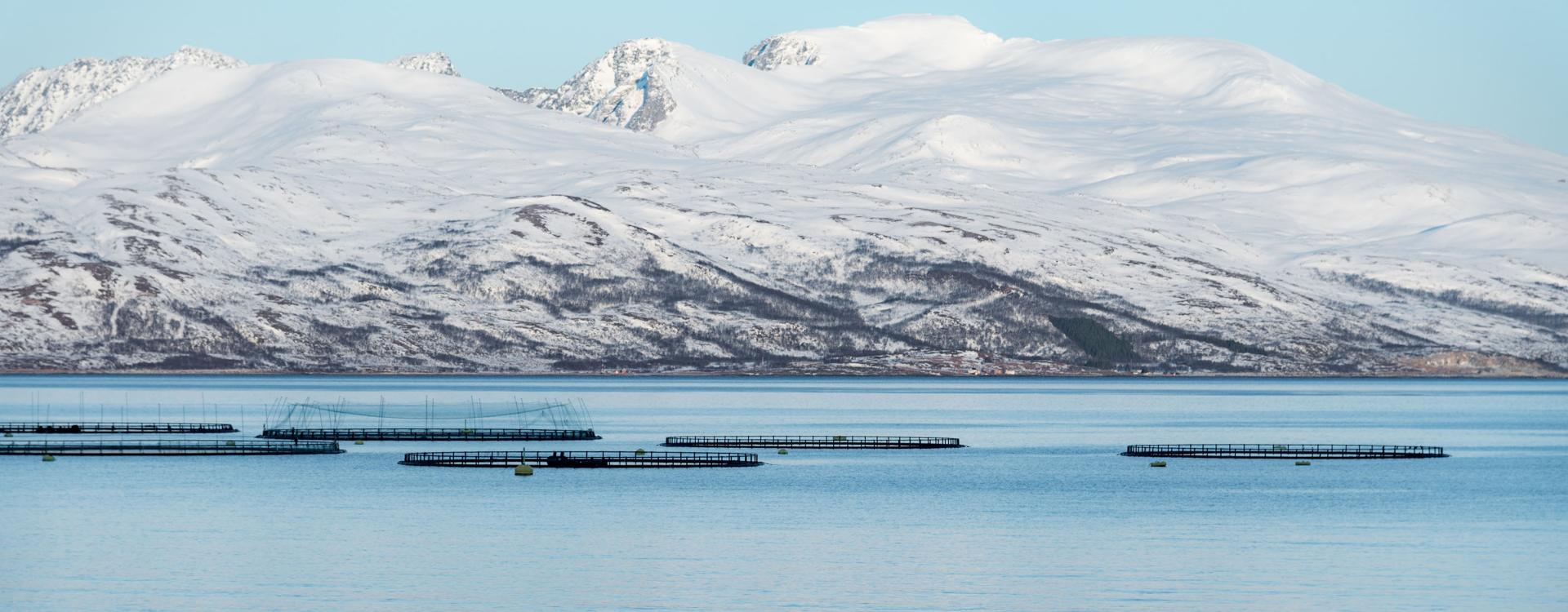
Fish farming in Norway. Photo Credit: © Ludovic Charlet
In a paper published in the journal Nature, an international collaboration of researchers takes a thorough look at the potential of a warming ocean to satisfy the growing global appetite.
“Climate change will challenge the ability for the ocean to meet the seafood demands of a growing population,” said Christopher Free, a researcher in the UC Santa Barbara Bren School of Environmental Science & Management and lead author of the paper. “However the ocean could produce more food than today through swift and ambitious actions.”
“Warming waters are changing where fish can live, what prey they can eat, and how well they can survive,” said Free. “Both fishers and fisheries managers have to adapt to these changes.”
Fisheries can maintain or increase their yields by adapting their practices to shifts in the productivity and location of their fish stocks, the researchers said. However, these reforms alone, though necessary, will be insufficient to fulfill future demand. Finfish and shellfish farms will be essential to fill that gap.
“Expansion of sustainable ocean aquaculture could build on fisheries reforms to increase the availability of healthy and sustainable seafood to our growing population,” said Halley Froehlich, an assistant professor at UC Santa Barbara and co-author of the paper. According to the study, the expansion of mariculture is projected to be limited by consumer demand or availability of feed ingredients derived from wild fisheries, rather than by climate change. With the appropriate selection of species and location, for example, the researchers found that “the availability of area for profitable finfish mariculture to be insensitive to changing temperature, oxygenation and salinity.”
Effective, efficient mariculture operations also have the benefit of requiring only a small amount of space; according to the study, typically 3% or less of a country’s exclusive economic zone is required to meet consumer demand, according to the researchers’ calculations.
“The small space requirement for mariculture leaves ample room for careful planning to minimize impacts on other ocean industries,” said Steve Gaines, dean of the Bren School and a co-author on the paper.
Its efficiency is one of mariculture’s key advantages: it has a lower greenhouse gas footprint and lower demands for water and land than many land-based sources of meat. And with improvements to finfish feed, breeding and husbandry, it is possible to further increase yield to meet consumer demand. According to the researchers, gearing food production toward the ocean could not only satisfy the growing global appetite for meat, it could also free up land required for terrestrial agriculture
“Shifts in consumer preferences away from terrestrial meat could reduce the environmental impacts of global food systems,” Froehlich said. With an increase in production, prices are expected to decrease, allowing access to local, sustainable and nutritious food.
Producing food from the ocean for future populations will no doubt take a global concerted effort. But nowhere is it more urgent than in tropical developing countries, places where climate-driven productivity loss, coupled with growing populations, put a great strain on food security.